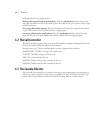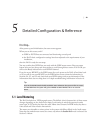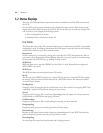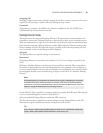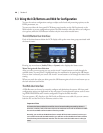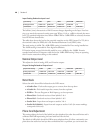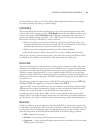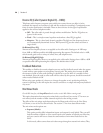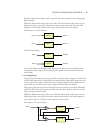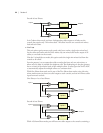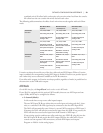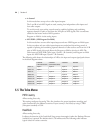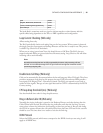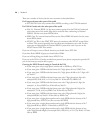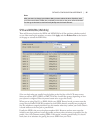50 | Section 5
Receive EQ (Caller Dynamic Digital EQ – DDEQ)
Telephone audio frequency response varies widely since many factors can affect it (we’ve
measured the response on a number of calls and the results were revealing). Consequently, some
form of receive equalization is desirable. ere are three choices for the type of equalization
applied to the received telephone audio:
Off
♦ – e caller audio is passed through without modification. e Rcv EQ values are
ignored in this mode.
Fixed
♦ – is is a simple manual equalizer mode where a fixed EQ is applied.
Adaptive
♦ – is is a three band dynamic equalizer. e high and low frequency boost or
cut is automatically determined and set. e Dynamic EQ uses the values set below as
‘target levels’.
(Additional) Low EQ
Amount of low frequency boost or cut applied to the caller audio. Settings are in 2dB steps
from -8dB to +8dB are possible with 0dB representing flat response. e default value is +4dB,
which sounds good across a variety of callers, lines, and telephone sets.
(Additional) High EQ High
Amount of high frequency boost or cut applied to the caller audio. Settings from -8dB to +8dB
are possible with 0dB representing flat response. e default value is 0dB.
Feedback Reduction
is enables or disables the acoustic adaption process used for feedback control when the system
is used with an open speaker-to-microphone acoustic path. is setting also increases by 6dB
the amount of send to caller audio ducking. It should be set to On when it is needed to elimi-
nate feedback. Since the send to caller audio will be colored by this process, should be turned off
unless needed. Default is Off.
When using open speakers it is best not to change the speaker or mic positioning while the
system is operating as this will require the acoustic canceller to re-adapt and temporary feedback
may occur.
Mix Minus Mode
On the Web interface, the Setup Wizard can be used to set the Mix-Minus routing mode.
is option determines how many mix-minus feeds you will need (see section 2.7 for more on
mix-minus) and the number of fader channels required on the mixing console.
e effect of the mix-minus mode depends upon the Show mode, which can be One Show,
4-Column, or one of the Two Show modes. See section 5.7 for more about Show modes.
e mix-minus mode options are:
Separate (default)
♦
is option provides fully independent inputs and outputs for each hybrid. us, you will
feed the number of faders on your console equal to the number of hybrids your show has,
and your console will have to create the same number of mix-minus feeds back to the
Nx12.
In this mode, callers cannot hear each other except through an external mix-minus. us,



